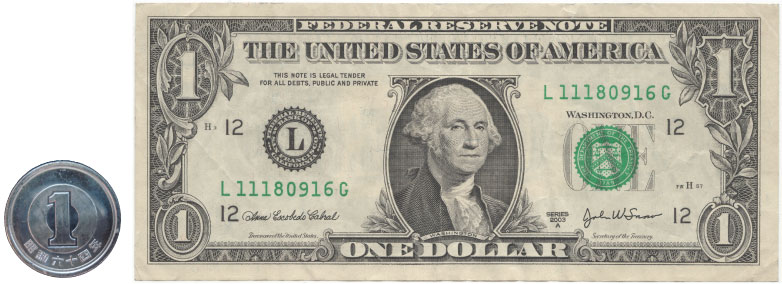One of things that has long interested me about Toyota’s production system is the role that cost reduction played in its development (obtained through non-zero-sum means). It seems an obvious point of focus for any producer of goods (or services). But what is not obvious is how the unit of measure, the yen, may have helped drive the focus. This, I believe led to much greater depth of thinking, creativity, learning, and know-how than we currently understand.
Prior to World War II, the Japanese auto market was a government regulated seller’s market (selling price = cost + profit). After World War II, the Japanese auto market was deregulated, and thus made into a buyers’ market (profit = selling price – cost). For Toyota to compete against Ford-Japan or GM-Japan, they had to produce vehicles at costs that were comparable to them but without benefit of their know-how, scope, and scale of production.
In Toyota’s pursuit of cost reduction, the unit of measure was (and still is) yen (¥). Today, one yen is equal to about one U.S. cent (it’s been that way, on average, since around 1990, while in 1950 there were 350 yen to the dollar). The salient point is that cost reduction was measured in yen. And that helped drive people’s thinking about what types of improvement constituted cost reduction.
 Among Western companies that seek to emulate Toyota’s production and overall management system, the unit of cost reduction is dollars or euros. Managers want dollar or euro cost reduction, not cents. Of course, 100 cents equals a dollar or a euro. But, the pursuit of cost reduction in cents is fundamentally different in both mindset and methods than the pursuit of savings in dollars or euros. I don’t know any Western organization in which the unit of cost reduction is cents.
Among Western companies that seek to emulate Toyota’s production and overall management system, the unit of cost reduction is dollars or euros. Managers want dollar or euro cost reduction, not cents. Of course, 100 cents equals a dollar or a euro. But, the pursuit of cost reduction in cents is fundamentally different in both mindset and methods than the pursuit of savings in dollars or euros. I don’t know any Western organization in which the unit of cost reduction is cents.
Perhaps this is another reason why so many companies struggle (or fail) fail in their efforts to emulate Toyota.
When the unit of measure for savings is dollars or euros, the many nifty little ideas that yield tiny cost reductions are of little interest to management, and, in turn, of little interest to workers. Yet it is in the details of how work is performed that small cost savings reveal themselves. And there are millions of such savings opportunities.
If the boss of DollarCo wants $1,000,000 in cost reduction, people will look for the “big hitter” ideas that get them to that number the fastest (using the 80-20 rule) and ignore small cost reduction ideas. If the boss of YenCo wants ¥100,000,000 in cost reduction, that bigger number changes people’s thinking and suggests to them they need many more ideas for cost reduction, even though they are working to achieve exactly the same amount of cost reduction as DollarCo. YenCo employees have the view that every little bit of savings helps achieve the goal – especially what was once a poor country. DollarCo employees don’t have the same view. The savings they seek must be 100 times greater.
This also suggests different levels of employee engagement in cost reduction. DollarCo, with the 80-20 rule in mind, will create a few small teams to achieve the cost reduction goal (naturally, because senior management wants to spend as little as possible on dedicated teams). YenCo has a much larger numerical target, which therefore will require everyone in the company to participate in achieving. Since everyone is getting paid for their labor, why not enlist everyone in generating cost reduction ideas? In addition, the engagement of everyone in cost reduction is respectful of each individual’s capability to think and contribute to cost reduction.
In addition, the learning is not the same at DollarCo and YenCo. The learning at YenCo will be far greater because saving a few yen is a bigger challenge and much harder to do. It means, for example, removing a few tenths of a second from a process, such as by eliminating a hand motion. DollarCo will learn enough to save a dollar, but never will they learn enough to save one cent. DollarCo employees want to eliminate hours from the process, never a few tenths of a second. You need a far more highly trained mind and far more discerning eyes to remove a few tenths of a second from a process. The 80-20 rule has the unintended consequence of stunting both thinking and learning. (Do 80 percent of chronic business problems come from 20 percent of the rules they use?).
Perhaps another important contributor to Toyota’s success was the yen.
